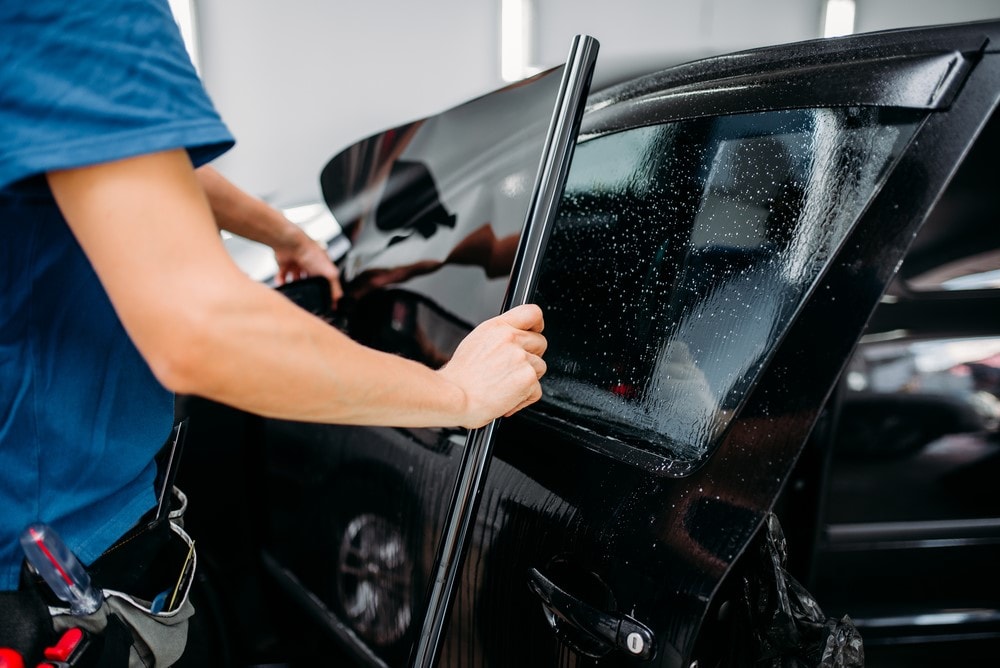Automobile Window Tinting: Find the very best Deals and High Quality Services Close-by
Automobile Window Tinting: Find the very best Deals and High Quality Services Close-by
Blog Article
Window Tinting Regulations and Standards: What You Required to Know Before Tinting Your Cars And Truck
Prior to waging home window tinting for your vehicle, it is important to acquaint yourself with the diverse regulations and standards that govern this method across various states. These policies determine the permitted levels of color darkness, commonly gauged by visible light transmission (VLT) portions, and include specific specifications for front windshields targeted at making certain road security. Additionally, particular territories might provide medical exemptions for people with certifying problems. Understanding these complexities can save you from possible legal implications, however what are the particular guidelines in your state?
Overview of Home Window Tinting Rules
Home window tinting regulations are often based on variant throughout various territories, showing regional guidelines and security considerations. These regulations dictate the allowable levels of tint darkness and reflectiveness on vehicle windows, making certain that vehicle drivers keep appropriate exposure while additionally securing versus dangerous UV rays and heat.
Many guidelines identify home window tinting based on the Visible Light Transmission (VLT) portion, which shows the amount of light that can go through the home window. Normally, reduced VLT percents symbolize darker colors. Laws frequently separate between the front, side, and rear home windows, with more stringent restrictions related to the front windscreen to boost safety and security for both the driver and various other roadway users.
Compliance with home window tinting regulations is crucial, as infractions can result in penalties, mandatory removal of the color, and potential increases in insurance costs. It is crucial for vehicle proprietors to acquaint themselves with regional legislations prior to proceeding with window tinting installations.
State-by-State Color Rules
Understanding the particular window tinting guidelines in each state is crucial for lorry proprietors seeking to follow the legislation. Each state in the U.S. has actually established its very own collection of rules controling window tinting, which can differ dramatically. These regulations often dictate the allowed degrees of color darkness, the sorts of home windows that can be tinted, and any kind of clinical exceptions that might use.
As an example, states like The golden state have stringent constraints on color darkness for front home windows, while others, such as New Mexico, might enable darker tints. Additionally, specific states mandate specific presence percentages for different windows, consisting of the windscreen, front side windows, and back home windows. It is vital for auto proprietors to acquaint themselves with their state's legislations to avoid possible penalties or penalties.
Additionally, some states might need an accreditation sticker label to be put on colored home windows, showing compliance with state regulations. Failure to stick to these policies not only risks lawful consequences however can also influence security and visibility while driving. Vehicle owners should perform detailed study or get in touch with regional authorities to make sure complete understanding and compliance with state-by-state color guidelines.
Allowed Tint Degrees and Types
Numerous automobile owners might be stunned to learn that permitted color levels and kinds differ commonly throughout different states. Each state has actually established its own guidelines relating to the acceptable darkness and reflectivity of window color, usually measured by Visible Light Transmission (VLT) portions. VLT refers to the quantity of light that can travel through the colored windows; hence, a lower percentage suggests a darker tint.

Furthermore, the kinds of tint materials permitted can vary, with some states prohibiting mirror-like or metal coatings. It is essential for vehicle owners to acquaint themselves with their state's specific regulations to make sure conformity. Non-compliance can lead to penalties, compulsory removal of the tint, or various other legal repercussions, making it essential to understand these regulations before proceeding with installation.
Medical Exceptions for Tinting
While not all states provide allocations for medical exemptions pertaining to home window tinting, those that do identify the requirement for certain people to boost visibility and comfort due to medical problems. Numerous clinical conditions, such as lupus, skin cancer cells, and particular eye conditions, can make people especially delicate to sunlight. These people might require darker tints to secure themselves from unsafe UV rays and glare.

It is essential to note that despite a medical exemption, there may still be constraints on the level of tint allowed. Conformity with state regulations makes certain that individuals are both protected and within lawful limits. Those thinking about clinical exemptions must contact their neighborhood Division of Electric motor Automobiles or equal authority to recognize the treatments and needs essential to look for an exemption properly.
Fines for Non-Compliance
Failing to abide with home window tinting regulations can bring about considerable fines, which differ by state. Legislation enforcement companies are empowered to provide citations for lorries that do not stick to the defined tinting guidelines. These charges generally include penalties, which can vary from modest total up to numerous hundred bucks, relying on the severity of the offense and the state in concern.
In some territories, repeated offenses may cause escalating fines or additional charges, such as necessary court looks. Furthermore, non-compliance may require the elimination of illegal tinting, frequently at click for more info the owner's cost. In extreme instances, habitual see here now wrongdoers may deal with suspension of their car registration till conformity is attained.
Furthermore, insurance policy implications may develop from obtaining several citations for window color offenses. Insurance providers might watch such offenses as an indication of riskier actions, potentially leading to increased costs or problem in insurance coverage.
To prevent these charges, it is critical for automobile owners to familiarize themselves with their local home window tinting laws and guarantee that their vehicle complies (Window Tinting). This aggressive approach not only avoids legal ramifications but likewise advertises road safety and security
Conclusion

Many guidelines identify home window tinting based on the Visible Light Transmission (VLT) portion, which indicates the quantity of light that can pass through the home window. Conformity with window tinting policies is her explanation important, as infractions can result in penalties, mandatory removal of the tint, and prospective boosts in insurance policy premiums.Comprehending the specific home window tinting laws in each state is vital for car proprietors looking for to comply with the legislation. These laws usually determine the allowed degrees of tint darkness, the types of home windows that can be tinted, and any type of medical exceptions that may use.
For circumstances, states like California have rigorous constraints on tint darkness for front windows, while others, such as New Mexico, may permit darker tints.
Report this page